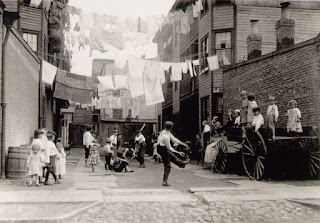1. Below each photo are suggestions for photographers. List 3 of the ones you think are the most important for photographers to remember when they are out shooting.
- Having a connection with your subject
- Look out for repeated patterns in photography and get good photos of them.
- Photographers shouldn't get hung up with finding spectacular subjects for their photos. A better skill to have is making the ordinary seem extraordinary.
2. Pick your favorite painting, get a copy of it and post it on your blog.
3. Then go find a REAL photo that looks like your painting. DO NOT GET AN ACTUAL PHOTO OF THAT PAINTING, find a photo that copies the style of the painting, but is NOT the painting.
4. Did the photographer follow the suggestions fully?
I feel the photo follows most of the steps mentioned. The painting is muted and casts shadows like the photograph. Also, the gas station is an extraordinary subject.
5. Which style of painting do you think might influence you?
The portrait style paintings and the landscape oil paintings were the most influential. In the portraits, the artists captured emotion from the people's expressions. This really helped tell a story. I want to do the same as a photographer. The oil landscapes were colorful and casted dramatic shadows, I hope to capture photographs with the same elements.





























